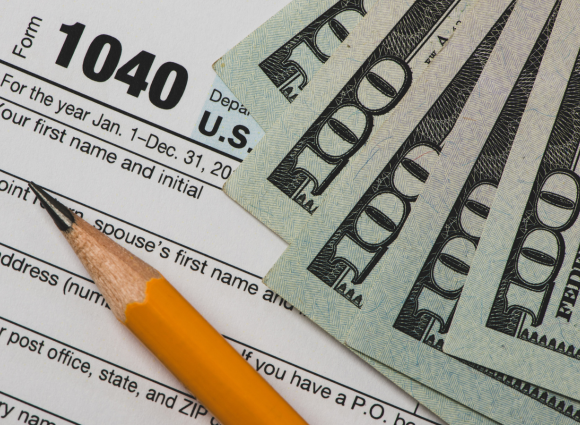
How Fast Can You Write off a Business Vehicle?
The federal income tax rules for depreciating vehicles used for business are complicated. And different rules apply to different categories of vehicles. Special limitations apply to vehicles that are classified as passenger autos, including many pickups and SUVs. As a result of these limitations, depreciating an expensive vehicle may take longer than you’d expect.
Here’s what you need to know about depreciation write-offs for vehicles used for business purposes.
Cents-Per-Mile Method vs. Actual Expense Method
Depreciation calculations only come into play if you choose to use the actual expense method to calculate your allowable business vehicle deductions. If you choose to use the alternative standard mileage rate — which is 56 cents per business mile for 2021 — a depreciation allowance is built into the rate. In fact, the standard mileage rate is meant to cover all business vehicle expenses, such as gas, oil, maintenance, repairs, tires and insurance. (However, you can also deduct any business-related parking fees and tolls.)
In most cases, you’ll be better off using the actual expense method. If you make that choice, depreciation deductions are calculated under the following rules.
Passenger Vehicle Depreciation Write-Offs Under Actual Expense Method
If you use the actual expense method to determine your allowable deductions for a passenger auto used for business, you must make a separate depreciation calculation for each year until the vehicle is fully depreciated. The term “passenger auto” means a vehicle that’s intended for use on public roads and that has a gross vehicle weight rating (GVWR) of 6,000 pounds or less. This definition captures many SUVs and pickups.
According to the general rule for passenger autos used over 50% for business, you calculate depreciation for the business-use portion of the cost over a six-year span as follows:
- 20% in the first year,
- 32% in the second year,
- 19.2% in the third year,
- 11.52% in the fourth year,
- 11.52% in the fifth year, and
- 5.76% in the sixth year.
However, if the vehicle is used 50% or less for business, you must use the slower straight-line method to calculate depreciation deductions.
For expensive passenger autos, your allowable depreciation deductions are subject to annual ceilings under the so-called “luxury auto” depreciation limits. The annual depreciation ceiling for a passenger auto placed in service in 2021 that cost more than $51,000 is:
$10,200 for the first year ($18,200 if you choose to deduct $8,000 of first-year bonus depreciation),
$16,400 for the second year,
$9,800 for the third year, and
$5,860 for all subsequent years until the vehicle is fully depreciated.
These luxury auto depreciation ceilings are proportionately reduced for any non-business use. If a luxury auto is used 50% or less for business, you must use the slower straight-line method to calculate depreciation deductions.
Heavy SUV, Pickup and Van Depreciation Write-Offs Under Actual Expense Method
More favorable depreciation rules apply to heavy SUVs, pickups and vans that are used over 50% for business, because they’re treated as transportation equipment for depreciation purposes. Heavy means a vehicle with a gross vehicle weight rating (GVWR) above 6,000 pounds. Quite a few SUV and pickup models pass this test. You can usually find the GVWR on a label on the inside edge of the driver-side door where the hinges meet the frame.
Most importantly, the business-use portion of the cost of these heavy vehicles qualifies for 100% first-year bonus depreciation, which means you can write off the entire business-use portion of the cost in the first year. The 100% bonus depreciation break is available for heavy SUVs, pickups and vans that are used over 50% for business and that are placed in service by December 31, 2022.
However, heavy SUVs, pickups, and vans must be depreciated using the slower straight-line method if business use is 50% or less. That’s because they’re so-called “listed property” for which you must keep usage records.
Actual Expense Method for Leased Passenger Autos
If you lease a passenger vehicle used for business, the general rule is that you can deduct the business-use portion of the lease payments. There’s no separate calculation for depreciation.
If you lease an expensive passenger vehicle used for business, you must add back a small part of the annual lease payments when calculating your allowable annual deductions. For a vehicle that is first leased in 2021, the term “expensive” means the vehicle’s fair market value is more than $51,000. The add-backs for leased vehicles are meant to approximate the impact of the annual luxury auto depreciation ceilings that apply to expensive owned passenger vehicles used for business.
The income inclusion amount varies based on the leased vehicle’s initial fair market value and the year the vehicle is first leased. Contact your tax professional to determine the appropriate income inclusion amounts for any vehicles your company leases for 2021.
After-Tax Cost Is What Matters
To measure the true cost of a business asset, you need to factor in the tax savings from related depreciation deductions. When depreciation deductions are stretched out — as under the luxury auto depreciation limits or when the straight-line method is required — the value of the related tax savings is lower due to the time value of money factor. So, the after-tax cost of the vehicle is that much higher.
Contact your tax advisor if you have questions. A tax pro can provide more detailed information about depreciating business vehicles.



